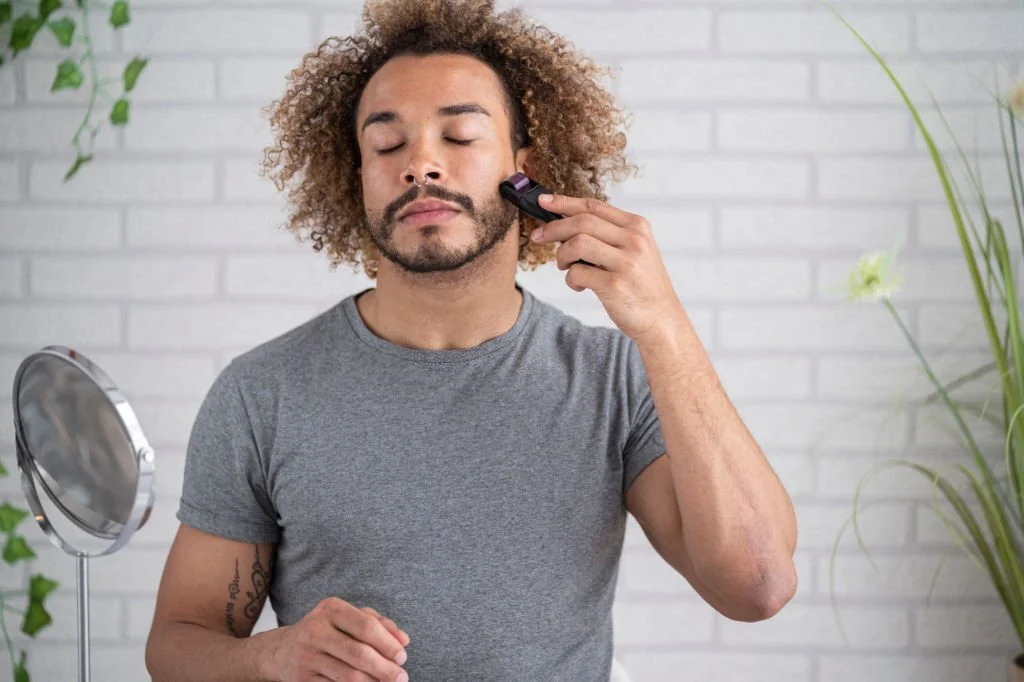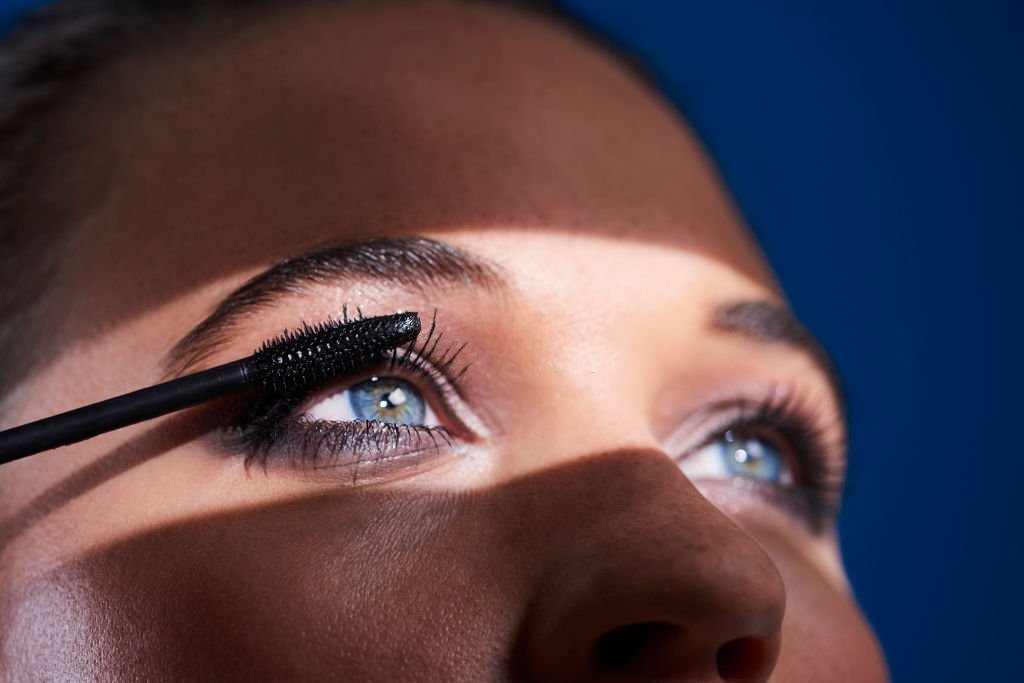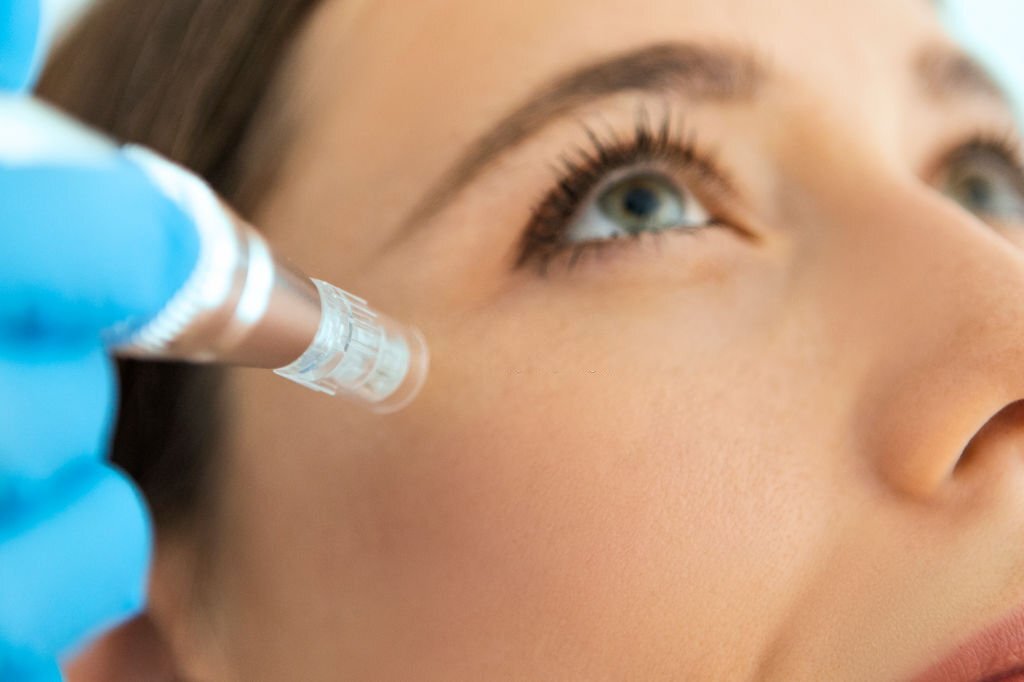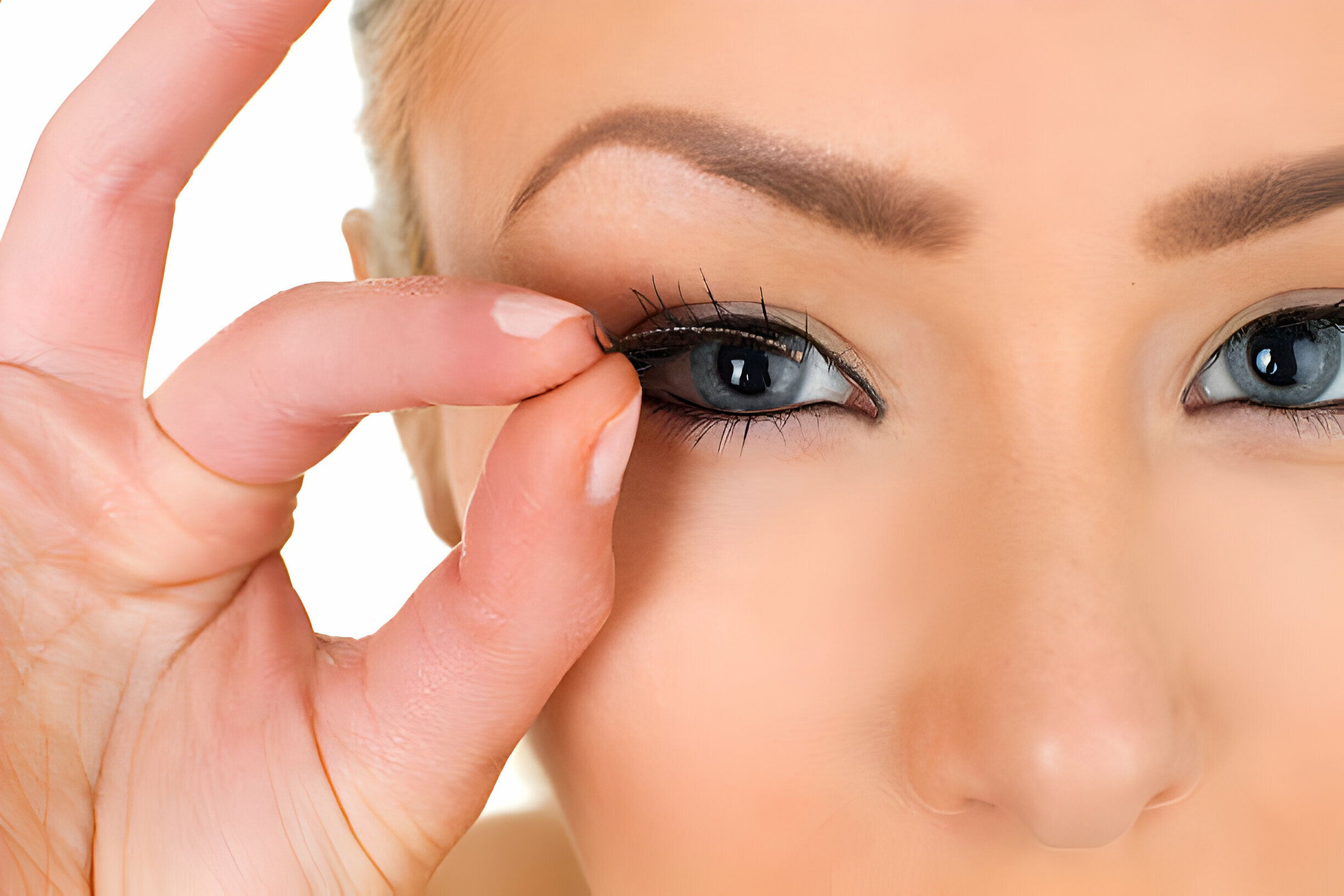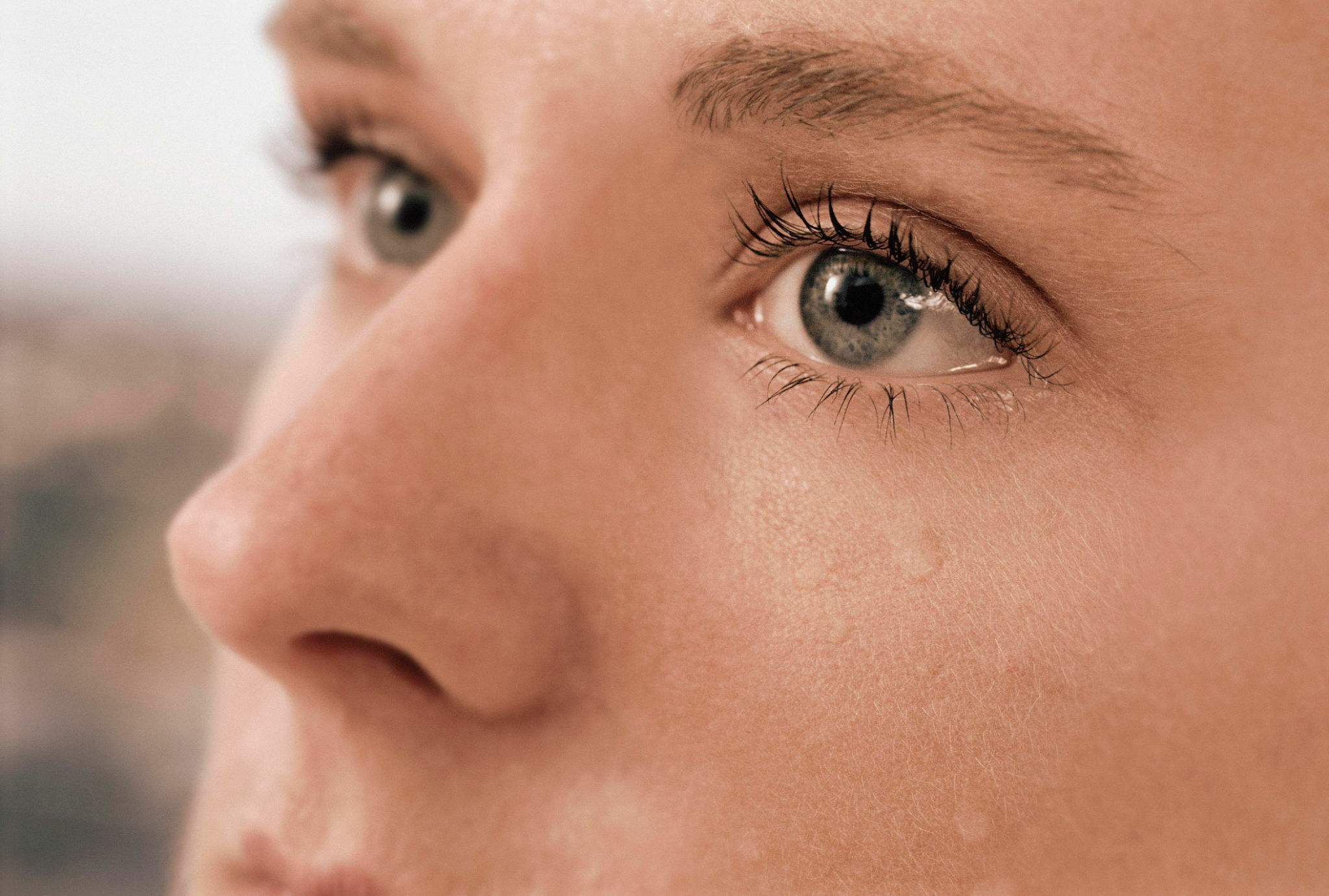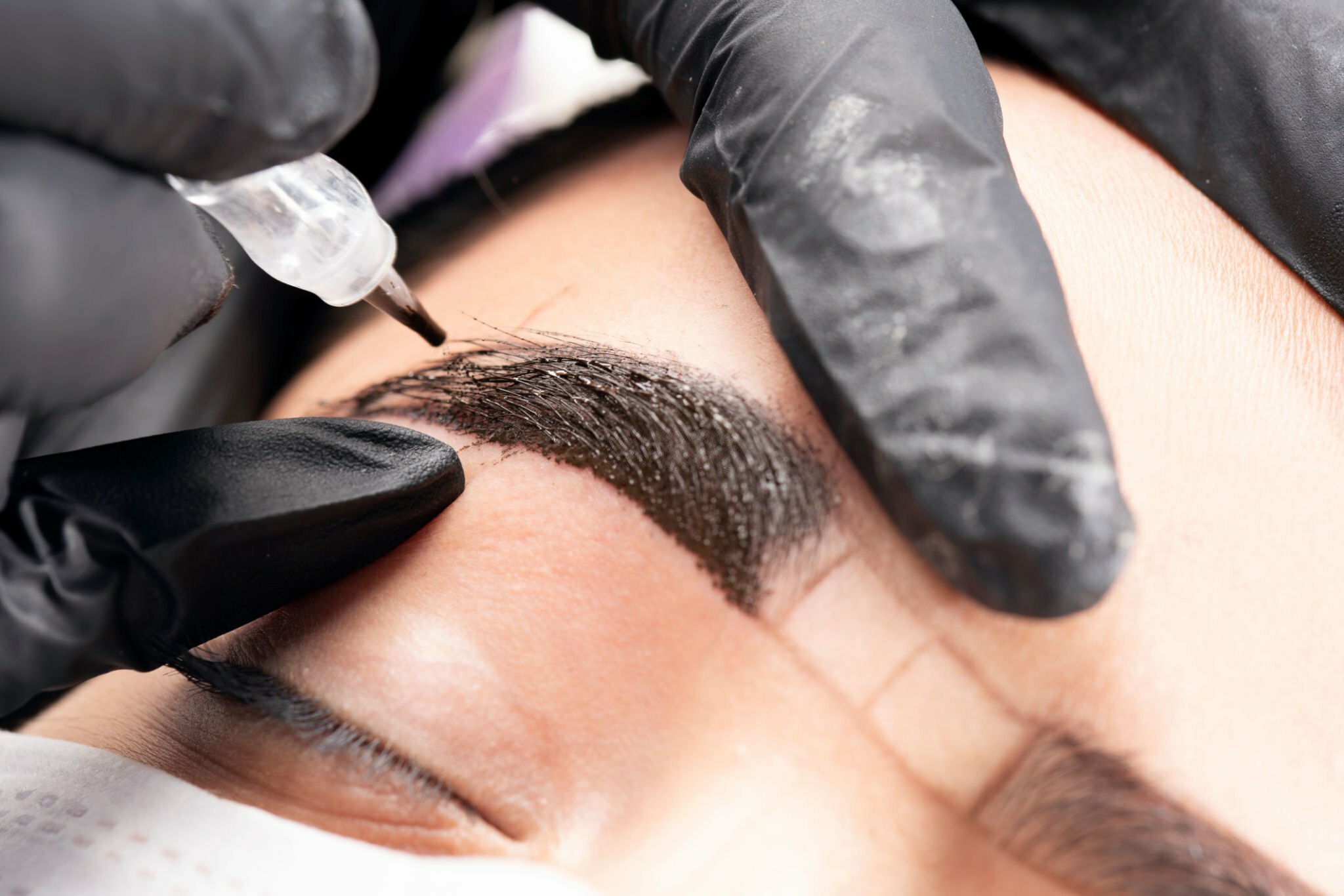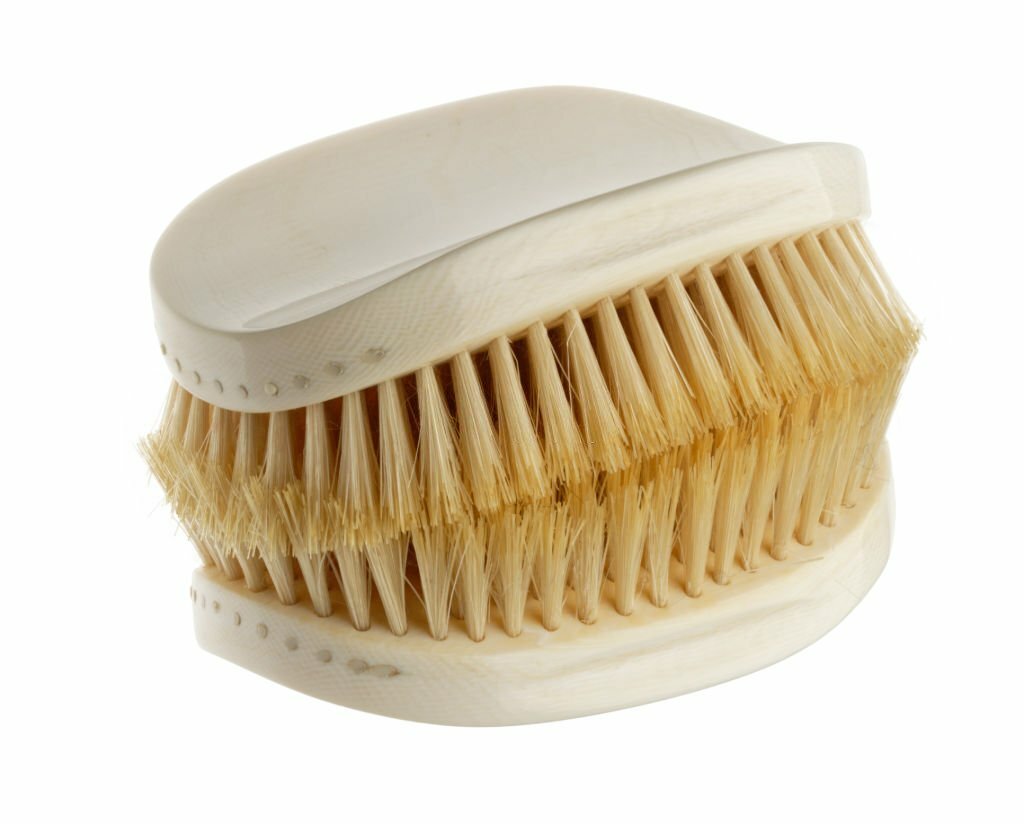Do Derma Rollers Work For Beard Growth?
The modern fascination with well-groomed beards has led to a surge in interest surrounding techniques that claim to enhance beard growth. Among these, derma rollers have garnered attention for their potential to stimulate facial hair development.
This article Do Derma Rollers Work For Beard Growth delves into derma rollers’ efficacy in promoting beard growth. Exploring the science behind these devices, considering research findings, and examining user experiences, this article provides a comprehensive overview of whether derma rollers genuinely live up to their promise or if the results are merely skin deep.
What Are Derma Rollers?
Derma rollers, or micro-needling devices or skin rollers, are handheld tools designed to enhance skin rejuvenation and stimulate collagen production. They consist of a small cylindrical barrel with numerous fine needles protruding from its surface. When rolled across the skin’s surface, these needles create tiny micro-injuries, triggering the body’s natural healing response.
In beard growth, derma rollers are sometimes used on the facial skin to activate dormant hair follicles and promote hair growth. The micro-injuries caused by the needles are believed to increase blood circulation and encourage collagen production and other growth factors, which may contribute to improved hair follicle health and density.
Beard Growth Factors
Beard growth is influenced by biological, genetic, hormonal, and environmental factors, with derma rollers potentially affecting this growth.
Genetics
Genetics plays a significant role in determining the potential for beard growth. One’s genetic makeup largely influences facial hair’s thickness, density, and pattern. Some individuals are naturally predisposed to growing robust beards, while others may have limited beard growth due to genetic factors.
Hormones
Androgens, mainly testosterone and dihydrotestosterone (DHT), play a crucial role in facial hair development. These hormones stimulate the growth of hair follicles in the beard area during puberty. Beard growth patterns are influenced by the sensitivity of hair follicles to these hormones.
Age
Beard growth is often linked to age. While some individuals may experience significant beard growth during adolescence and early adulthood, others might notice beard density and thickness improvements as they mature.
Blood Circulation
Adequate blood circulation to the facial hair follicles is essential for their health and growth. Improved circulation can deliver essential nutrients and oxygen to the follicles, supporting their activity and promoting hair growth.
Nutrition and Diet
Proper nutrition, including hair growth, is vital for overall health. Nutrients like biotin, vitamin D, zinc, and protein promote healthy hair follicles and beard growth. A balanced diet can contribute to optimal beard development.
Lifestyle Factors
Lifestyle choices such as sleep quality, stress levels, and physical activity can indirectly affect beard growth. High stress and poor sleep can disrupt hormone levels, potentially impacting facial hair growth.
Skin Health
The health of the skin where facial hair grows is closely linked to beard growth. Healthy, well-moisturized skin provides a favorable environment for hair follicles to thrive.
Topical Products
Various topical products, such as beard oils, balms, and growth serums, claim to support beard growth. These products often contain ingredients that nourish the skin and hair follicles, potentially enhancing beard growth and appearance.
Micro-Injury Stimulation
This is where derma rollers come into play. The micro-injuries created by the derma roller needles stimulate blood flow, collagen production, and the release of growth factors, potentially contributing to improved hair follicle health and beard growth.
Do Derma Rollers Work For Beard Growth?

The effectiveness of derma rollers for promoting beard growth remains a subject of interest and ongoing research. While derma rollers have gained attention for their potential to stimulate hair follicles through micro-injury stimulation and increased blood circulation, their exact impact on beard growth has yet to be universally agreed upon. Some users report positive results in terms of improved beard thickness and density after incorporating derma rolling into their grooming routines.
These outcomes are often attributed to the potential enhancement of collagen production and nutrient delivery to hair follicles. Individual responses to microneedling for hair growth may vary due to genetics, hormonal factors, and health. Further research on derma rollers and beard growth is needed to establish their efficacy definitively. Consultation with a dermatologist or medical professional before incorporating derma rollers into a beard care regimen is recommended.
How To Use A Derma Roller For Beard Growth
Using a derma roller for potential beard growth involves a careful and systematic approach to ensure safety and effectiveness. Here’s a step-by-step guide on how to use a derma roller for beard growth:
Choose The Right Derma Roller
When selecting a derma roller for beard growth, opt for one with needle lengths ranging from 0.5mm to 1.0mm. This length is suitable for effectively targeting the hair follicles on the face without causing excessive discomfort. Look for a derma roller made of high-quality stainless steel needles, and ensure it is from a reputable brand. Check customer reviews and ratings to verify their quality and effectiveness.
Cleanse Your Face
To begin the derma rolling process, it is essential to cleanse your face thoroughly. Use a gentle facial cleanser to wash away any dirt, oil, or debris that may be present on the skin’s surface. Gently massage the cleanser onto your face using circular motions, paying close attention to the beard area. Rinse with lukewarm water and pat your face dry with a clean towel.
Sterilize The Derma Roller
Proper sterilization is crucial to maintain hygiene and minimize the risk of infection. Prepare a solution of 70% isopropyl alcohol and water in a clean bowl. Submerge the derma roller head in the solution for approximately 5 to 10 minutes to ensure thorough sterilization. Afterward, rinse the roller head with warm water to remove any residual alcohol.
Prepare Your Skin
Apply a numbing cream or topical anesthetic to the treatment area if desired. This step can help minimize discomfort during the derma-rolling process. Follow the instructions provided with the numbing cream and allow sufficient time for it to take effect before proceeding.
Start Rolling
Hold the derma roller handle firmly and gently roll it over the beard area in one direction. Begin at the edge of the treatment area and work your way inward. Apply light pressure, ensuring it is comfortable and does not cause excessive pain or irritation. The rolling action creates microchannels in the skin, stimulating blood flow and promoting beard growth. Repeat this process several times, covering the entire beard area.
Change Rolling Directions
After several passes in one direction, change the rolling direction by 90 degrees. This technique ensures the microneedling action reaches the hair follicles from different angles. Roll over each section of the beard area again in the new direction, maintaining the gentle pressure.
Be Cautious With Sensitive Areas.
Exercise caution when rolling near sensitive areas such as the lips, eyes, and nostrils. Avoid rolling directly over these areas to prevent discomfort or damage. Instead, work around them, focusing on the beard area itself.
Complete The Rolling Session.
Continue rolling the derma roller over the entire beard area until you have covered all desired spots. Maintain consistent pressure and ensure even coverage. Take your time and be thorough in your approach.
Apply Beard Oil Or Serum
After completing the derma rolling session, apply a beard oil or serum containing nourishing ingredients. Look for products that include biotin, vitamin E, or minoxidil, as they can help support beard growth and provide hydration to the skin and hair follicles. Gently massage the oil or serum into the beard area for optimal absorption.
Clean And Store The Derma Roller
Rinse the derma roller thoroughly under warm water to remove debris or serum. Pat it dry with a clean towel and allow it to air dry completely. Once dry, store it in a clean and dry container to maintain its cleanliness and integrity for future use.
Are Derma Rollers Risky?
Improper use of derma rollers can pose health risks to the skin and overall health, so it’s crucial to be aware of these risks and follow recommended guidelines.
- Choose a reputable derma roller: Look for a derma roller with needles made of medical-grade stainless steel. Ensure that the roller is from a reputable brand and meets safety standards. Check customer reviews and ratings to ensure the quality and effectiveness of the product.
- Cleanse your skin: Start by thoroughly cleansing your skin with a gentle cleanser to remove any dirt, oil, or makeup. Pat your skin dry with a clean towel before proceeding.
- Sterilize the derma roller: To prevent infections, it’s crucial to sterilize the derma roller before each use. Fill a clean bowl with 70% isopropyl alcohol and water. Submerge the derma roller head in the solution for 5 to 10 minutes. Rinse it with warm water afterward.
- If desired, prepare the skin: Apply a numbing cream or topical anesthetic to the treatment area. This step can help minimize discomfort during the microneedling process. Follow the instructions with the numbing cream and allow sufficient time.
- Roll with gentle pressure: Hold the derma roller handle and start rolling it over the skin in one direction. Begin at the edge of the treatment area and work your way inward. Use gentle pressure and avoid pressing too hard to prevent excessive skin irritation or injury. Roll over each area several times in a crisscross or diagonal pattern for even coverage.
- Treat each section individually: Divide the treatment area into smaller sections and roll each section individually. This ensures thorough coverage and prevents excessive pressure on any particular area. Be cautious around sensitive areas such as the eyes and lips.
- Cleanse and moisturize after treatment: After the microneedling session, cleanse the skin again to remove any traces of blood or serum. Use a gentle cleanser and lukewarm water. Pat the skin dry with a clean towel and apply a soothing moisturizer or serum to help hydrate and calm the skin.
- Follow proper aftercare: Following proper aftercare guidelines to promote healing and protect the treated skin is crucial. Avoid direct sun exposure for at least 24 hours after the treatment. Apply a broad-spectrum sunscreen with SPF 30 or higher when going outside. Avoid using harsh skincare products or exfoliants immediately after microneedling. Stick to gentle, hydrating products to support the healing process.
- Monitor your skin’s reaction: Observe how your skin reacts after using the derma roller. Mild redness and skin irritation are normal and typically subside within a few hours. However, seek immediate medical attention if you experience severe pain, prolonged redness, excessive swelling, or signs of infection (such as pus or fever).
Are There Other Ways To Grow Your Beard?
Yes, several other methods and factors can influence beard growth. While individual results may vary, incorporating these approaches into your routine may contribute to a fuller and healthier beard:
Balanced Diet and Nutrient Intake
Maintaining a balanced diet rich in essential nutrients is crucial in promoting overall health, including beard growth. Proteins, vitamins, and minerals such as biotin, E, and omega-3 fatty acids promote hair growth. Include foods like eggs, fish, nuts, and leafy greens to provide the building blocks for robust hair development. Additionally, staying hydrated supports overall skin health, creating a favorable environment for beard growth.
Hormonal Balance
Hormones, particularly testosterone and dihydrotestosterone (DHT), play a pivotal role in beard growth. Regular physical activity, including strength training, can help boost testosterone levels. Adequate sleep is crucial, as the body produces hormones during deep sleep cycles. Stress management techniques, such as meditation and yoga, contribute to hormonal balance, preventing potential hindrances to beard growth.
Proper Beard Care
Maintaining a healthy beard requires proper grooming and care. Regularly washing the beard with a mild cleanser removes dirt and prevents clogged hair follicles. Use a beard conditioner to keep the hair soft and manageable. Trimming the beard regularly promotes even growth and prevents split ends. Brushing or combing the beard helps distribute natural oils, enhancing overall health.
Minoxidil Application
Minoxidil, a topical over-the-counter medication, has gained popularity for promoting hair growth, including beards. Applying minoxidil to the facial hair area may stimulate blood flow and increase nutrient delivery to hair follicles, potentially encouraging beard growth. However, consulting with a healthcare professional before using minoxidil is essential to discuss potential side effects and ensure it’s a suitable option for individual needs.
Patience and Avoiding Irritants
Beard growth is a gradual process that requires patience. Avoid trimming or shaping the beard during the early stages, as this may impede growth. Additionally, minimize exposure to irritants such as harsh chemicals and hot water, which can strip the beard of natural oils and hinder healthy growth.
What To Look For In A Derma Roller
When selecting a derma roller for beard growth or skincare, consider several factors to ensure a safe and effective device.
- Needle Length: Determine the appropriate needle length based on your specific needs. For facial use, including beard growth, needle lengths between 0.5mm and 1.0mm are generally recommended. These lengths are effective for targeting the hair follicles without causing excessive discomfort or skin damage.
- Needle Material: Look for a derma roller with high-quality needles. Stainless steel needles are commonly used due to their durability and resistance to corrosion. Ensure the needles are sharp and securely attached to the roller head for effective and safe use.
- Needle Arrangement and Density: The needles’ arrangement and density can affect the derma roller’s effectiveness and comfort. Ideally, the needles should be evenly spaced across the roller head and have a sufficient density to provide adequate coverage during the rolling process. This ensures that the microneedling action is distributed evenly across the treatment area.
- Safety Features: Consider derma rollers with safety features such as a protective cover or cap for the needle head. These features help prevent accidental needle damage and maintain the sterility of the roller between uses. Safety features are important for both protection and hygiene purposes.
- Brand Reputation and Reviews: Research the brand reputation and read customer reviews to ensure you purchase a reliable and reputable derma roller. Look for derma rollers from established brands or those recommended by healthcare professionals or dermatologists. Positive customer reviews can provide insights into the quality and effectiveness of the product.
- Sterilization and Hygiene: Choosing a derma roller that can be easily sterilized to maintain hygiene is essential. Look for rollers made from materials that can be effectively sterilized, such as stainless steel. Additionally, consider how easy it is to clean the derma roller after each use to prevent the risk of infection. Some derma rollers come with cleaning instructions or special cleaning tools.
- Ergonomic Design: Consider the ergonomics of the derma roller. Look for a roller with a comfortable handle that provides a secure grip. An ergonomic design ensures that you can easily hold and maneuver the derma roller during the rolling process, allowing for precise and controlled movements.
- FDA Approval or Medical Certification: While not mandatory, derma rollers with FDA approval or medical certification indicate that they have undergone testing and meet certain safety standards. This can provide additional confidence in the quality and safety of the product.
How To Clean Derma Roller?
Cleaning your derma roller is a crucial step to ensure both its longevity and the safety of your skin. After each use, follow these steps to clean your derma roller effectively: Start by carefully removing the roller head from the handle.
Rinse the roller head under warm running water to remove any remaining debris or residue. Then, fill a small container with 70% isopropyl alcohol or a specialized derma roller cleaning solution. Place the roller head into the solution, ensuring that the needles are fully submerged.
Let it soak for about 10-15 minutes. After soaking, gently shake the roller head in the solution to dislodge any remaining particles. Remove the roller head and rinse it thoroughly under running water to wash away the alcohol or cleaning solution. Leave the roller head to air dry on a clean paper towel or cloth.
Once completely dry, reattach the roller head to the handle and store it in its protective case or container. Remember to repeat this cleaning process before each use to maintain proper hygiene and prevent the risk of infection or skin irritation.
FAQs
How Long Does It Take For A Derma Roller To Grow A Beard?
The timeframe for visible beard growth after using a derma roller varies, but noticeable results might take a few months of consistent and proper use.
How Often Should I Derma Roll My Beard?
For beard growth, derma rolling should generally be spaced out with 4 to 6 weeks between sessions to allow the skin to heal and promote optimal results.
Should I Put Beard Oil On The Derma Roller?
It’s advisable not to apply beard oil immediately after derma rolling to prevent potential irritation; wait a few hours before using beard oil.
How Long Does A Derma Roller Last?
A derma roller’s lifespan varies, but proper care and regular use can last several months to a year before needing replacement.
What Size Derma Roller Is Best For A Patchy Beard?
A derma roller with needle lengths around 0.5mm to 0.75mm is often recommended for targeted stimulation without excessive discomfort for patchy beard areas.
Conclusion
Derma rollers can promote beard growth through micro-injury stimulation and collagen induction. While some studies suggest positive outcomes, caution and informed decision-making are crucial. Understanding individual factors like genetics, hormonal balance, and overall health is essential for managing expectations. Consulting a dermatologist and adhering to proper usage guidelines can help individuals maximize the benefits of derma rollers.
Jillian Ruffo
As a Beauty Care and Wellness Writer, of liveandfeel I focus on the holistic concept of wellness, encompassing mental, physical, and emotional health. I create engaging content that informs and empowers readers to prioritize self-care. My content celebrates diverse definitions of beauty and encourages self-love. I explore natural ingredients, cutting-edge beauty technologies, and mindfulness practices, fostering a sense of well-rounded well-being. My goal is to inspire readers to prioritize self-care and discover the latest trends in beauty.

